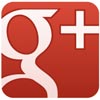Pinterest exploded onto the social media scene in 2010, and has enjoyed stellar growth each year since. Today, 16% of the U.S. population is on Pinterest, which puts it right up there with Twitter.
What does this mean for your brand or small business? For starters, you should know that Pinterest users are often looking to buy. According to the website business2community, “Pinterest gets 12-14 times the referrals that Twitter or Facebook generate, and the average order value from social referrals is $179 from Pinterest, $80 from Facebook, and $69 from Twitter.”

Furthermore, Pinterest has now revealed that all users can now use Pinterest Promoted Pins for whatever they choose. If the success of Facebook ads is any indication, this should open up lucrative opportunities for companies using Pinterest.
So if your business is not on Pinterest yet, then obviously it should be. Here’s what you need to know to get started.
Images
You’ve probably noticed that many Pinboards are devoted to food, fashion, travel, design, and other “visual” categories. So photos are key, but they are of a different variety than the more “artsy” style found on Instagram.
Pinterest photos tend to be more polished like in a glossy magazine. They should be enticing and encourage a click through to your website.

Make the image identifiable and easy to categorize. Don’t make people guess what the photo is about.
Avoid using stock photographs. Not only is it unoriginal, but often Pinterest identifies stock photos on your Pins—even if you didn’t.
Pins displaying people’s faces get re-pinned 30% less often than pins that don’t.
Use taller image dimensions, and set the contrast to the lighter side. Dark, brooding photos do well on Instagram, but not on Pinterest.
Make your Pinterest profile page itself look like a colorful collage that you’d want to hang on a real wall in your house. Do this by carefully selecting the cover photo for each and every board.
The Written Word
The idea for pins is to keep them as visual as possible. The words should only add a little something to the images, and not distract from them.
Give each board a clever title and description. Think “ad copy” rather than short story.
Always include a price if you’re selling a product. It increases re-pins and click-through rate by 5-6 times.

Always include a link so that your potential customer can jump right to a product page instead of searching all over the Internet for it.
Your pin description should only describe your pin and not go off on some other tangent. It can be up to 500 characters, and should include SEO-friendly keywords. But make it as short as possible.
Hashtags aren’t as popular on Pinterest as they are on other platforms like Twitter or Instagram, but you can still use them. In any case, every word in a pin description is searchable, hashtag or not.
Adding a link to your website in the description of a pin creates more backlinks and can improve your SEO.
General Suggestions
Avoid excessive self-promotion; let the images speak for themselves and they’ll do the work for you. Use calls-to-action sparingly.
Use evergreen content more than trending topics. The lifespan of a pin is much longer than a tweet or a Facebook update, so someone could potentially find your pin months later.

Improve your social image (a.k.a. popularity). This can be difficult in the very beginning, but getting an initial boost from a social media marketing company can be a huge help. Consider this option to gain some initial momentum.
Set your Pinboards open to contributors. This is a great way to invite fans and customers to participate, creating a deeper connection and giving you more social proof.
Don’t forget to verify your website with Pinterest. Without verification, you can’t use the platform’s built-in .
Make it easier for others to share your content by adding “Pin It” buttons directly to your onsite images.
Add a Pin button to your website, but also embed a few of your top Pin Boards with a widget.
Conclusion
A business needs to be aware of what its customers want, and it should be able to deliver that to them through a variety of ways. Pinterest appeals to their visual sense, and represents a “virtual wish list.” But not just “the things I want to have,” but also, “who I want to be.” Businesses need to understand this and be there to fulfill their customers’ wishes. Happy Pinning!

